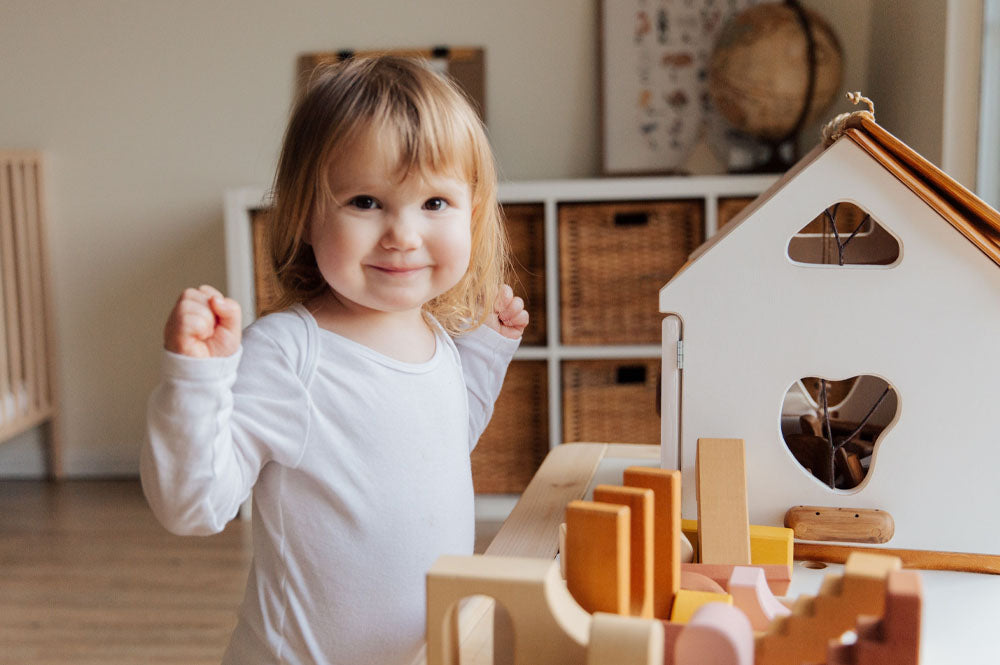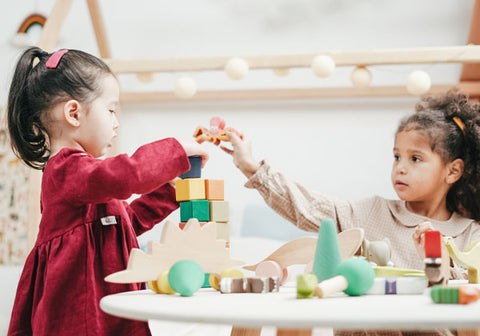Playing Around: How to Create a Perfect Space for Your Children

Adding a playroom to your home offers a win-win situation. Your children have a dedicated space to keep their possessions while the bulk of your home remains tidy. You don’t necessarily need a spare room either; you can create a play corner anywhere.
The key to designing play areas is finding a balance between functionality, creativity and safety, according to Steven Wright, an editor at Lifestyle to the Max, a platform dedicated to promoting wellbeing. “Consider the child's interests, age and developmental needs,” he recommends. “Incorporate versatile storage solutions to keep the room organized and adaptable to changing play preferences.”
For example, if your child enjoys music, then fill the shelves and toy box with items such as xylophones, musical shakers and a mini drum kit, suggests Mariya Snisar, the head of interior design at Renowell, a Canadian home renovation company. “If they love tactile play and art, then a painting and drawing station with sensory toys will be perfect,” she says.

Photo by Cottonbro Studio/Pexels
Playroom basics
Other playroom essentials besides age-appropriate toys include comfortable seating, a table and chairs, shelving, storage that children can access easily and durable, easy-to-clean floors. “Make sure the flooring is comfortable for the child to sit or lie on during endless hours of play — use soft cotton rugs that are secured in place with non-slip mats underneath to prevent slipping and falling,” says Snisar.
“Incorporate modular furniture that can adapt as the child grows,” suggests Wright. “Adjustable shelving, versatile seating and multi-purpose tables can evolve with changing needs, ensuring the room remains relevant and engaging.”
You can also create dedicated zones within the playroom, according to Ginadi Feldman, CEO and interior designer at Feldman Construction. These could include a reading nook, an arts and crafts corner, a building area, etc. “This fosters creativity and keeps the space organized,” says Feldman, who also recommends ensuring you have proper lighting for various activities. “Bright, focused lighting for reading and crafting, and softer ambient lighting for relaxation, can enhance the functionality of the playroom,” she adds.

Choosing a color scheme
"Kids grow up fast and their tastes change so I usually tell parents not to give in when their kids ask to paint the playroom neon orange,” says Kathy Kuo founder and CEO of Kathy Kuo Home.
Instead, she suggests considering a versatile color scheme that also feels youthful. It also helps to look for hues that stimulate imagination and promote a soothing atmosphere, offers Wright. Some color schemes he suggests are:
Bright and vibrant colors like red, yellow, and orange seem energetic and lively … just the thing to prompt kids to play imaginatively.
Soft and calming colors like pastels or light blues promote a soothing and relaxing atmosphere, perfect for quieter activities like coloring or reading.
Green evokes nature and growth and helps infuse the room harmony and tranquility.
Purple often represents creativity and imagination. Using accents of the hue can invite artistic and creative expression.
Neutral tones such as beige, white or gray offer a clean and balanced canvas for the room.
No matter what colors you choose, opt for non-toxic, washable paints. You could also use decals or murals to add playfulness and fun wall art. Kuo suggests bringing your kids into the selection process. “Why not have a framed picture of Hello Kitty on the wall?,” she says. “You can always swap it out later on."

Safety first
Safety is of paramount importance since you want children to explore their space without constant adult supervision. Whatever items you put into the playroom, be mindful of choosing items with small parts, which could cause choking if swallowed. Also avoid any accessories that could strangle a child, offers Snisar. For instance, roller blinds have long cords that can easily twist around a little one’s throat or arm, causing serious injury or death. Curtain tiebacks and tassels can also be hazardous. In fact, avoiding window treatments or choosing sill-level curtains or a valance can be a better alternative.
Attach heavy furniture like bookcases to the wall so it won’t tip when little ones go climbing. You’ll also want to install outlet covers, secure low windows and add soft padding to items with sharp corners. Childproof cables and wires as well, bundling them with ties or placing them in organizers.

Creating a play space in a pre-existing room
The key to adding a play area to your living or family room without crowding the adult-portion of the space is to work with the aesthetic you already have. For example, Kuo suggests starting with floor baskets for toys that match your existing décor. “Add a small accent rug to tie the play space together, but, again, make sure it blends in with the rest of the living room,” she adds.
Jacky Chou, principal and director at Archute, an architecture, home and garden magazine recommends choosing a location that is convenient, accessible and visible. For example, try a corner, a nook or a niche near the room’s main seating area, entryway or window. “You can also use a partition, a screen, or a curtain to create a sense of separation and privacy,” she advises.
She also advocates for a harmonious, and cohesive style throughout the space. “You can use colors, patterns or themes that match or complement the existing decor of the room,” she says. “You can also use elements, accents or details that blend or contrast with the existing style of the room.”
Want to read more about designing kid's rooms? Check out our blog post on infusing children's rooms with creativity and fun.
Featured photo by Tatiana Syrikova/Pexels
Share
To the Stage: Three Designers Talk About Creating Theatrical Ambience
Just as a foyer sets the tone for a home, a set indicates to an...
Fabrics and Home's Interior Decorating Gift Guide
Americans gave an average of nine gifts during the last holiday season, according to the...
Glamping Best Practices: How to Make Your Camping Experience More Decor Inspired
Glamping is a blend of the words “glamorous” and “camping.” While the word was first...
Get on the list
Sign up for our newsletter and we’ll keep you up to date on the latest news and exclusive offers!

Leave a Comment